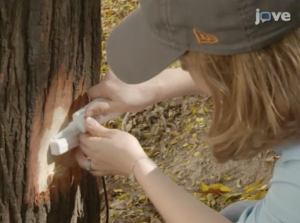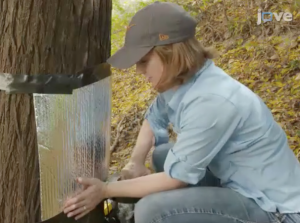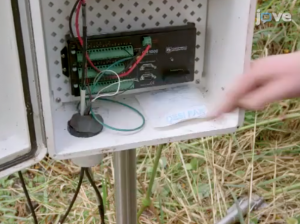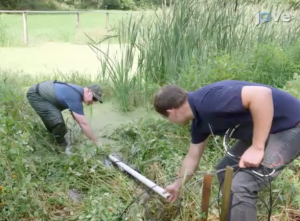The first time that I collected soil samples during my Ph.D., I quickly learned that the success of research in the field involves careful planning. Rather than having well-stocked lab shelves available, you only have access to the materials brought with you to a field site. If you miscount the number of supplies needed, you may have to come up with a creative alternative on the spot. Additionally, working outdoors is inherently unpredictable. You must plan ahead to minimize the impact of environmental variables on your research.
Many field-based projects require continuous monitoring of parameters in the air, water, soil, or living organisms in order to assess current environmental conditions and to make predictions about ecological health. To ensure that monitoring equipment provides accurate readings, sensors must be carefully calibrated and then properly installed. Researchers must also take precautions to prevent damage to electronic equipment which may be outdoors for long periods of time. Here, I’ll highlight a few recent protocols in JoVE Environment that detail the correct calibration and installation of field monitoring equipment which is key to successful long-term measurements.
 In this JoVE video article, researchers at the University of Texas at Austin demonstrate the installation of capacitance sensors into tree trunks to measure water content. Monitoring tree water content in real time can help assess drought response and improve watering efficiency of agricultural orchards. The researchers developed a calibration curve for the sensors in the lab by soaking tree cuttings in water and then progressively drying the samples while taking capacitance measurements. The researchers also demonstrate the steps for proper installation including sealing around the sensors to prevent insects from interfering with readings.
In this JoVE video article, researchers at the University of Texas at Austin demonstrate the installation of capacitance sensors into tree trunks to measure water content. Monitoring tree water content in real time can help assess drought response and improve watering efficiency of agricultural orchards. The researchers developed a calibration curve for the sensors in the lab by soaking tree cuttings in water and then progressively drying the samples while taking capacitance measurements. The researchers also demonstrate the steps for proper installation including sealing around the sensors to prevent insects from interfering with readings.

In this JoVE video article, researchers at Pennsylvania State University demonstrate how to correctly install probes to continuously measure water quality in vernal ponds--temporary ponds that serve as habitats for amphibians. As a result of human activities such as pollution of ponds by wastewater, the global amphibian population has declined. The researchers install probes to monitor parameters that make vernal ponds a suitable habitat such as dissolved oxygen and pH. In this protocol, equipment damage from mice is prevented by enclosing wires in a PVC pipe. Data from the probes is collected by a datalogger. To prevent damage to the datalogger, it is enclosed in a case and all holes are plugged with clay to keep out insects and moisture.
The steps demonstrated in these protocols can help scientists better plan for work in the field to obtain reliable measurements and also minimize damage to monitoring equipment.



